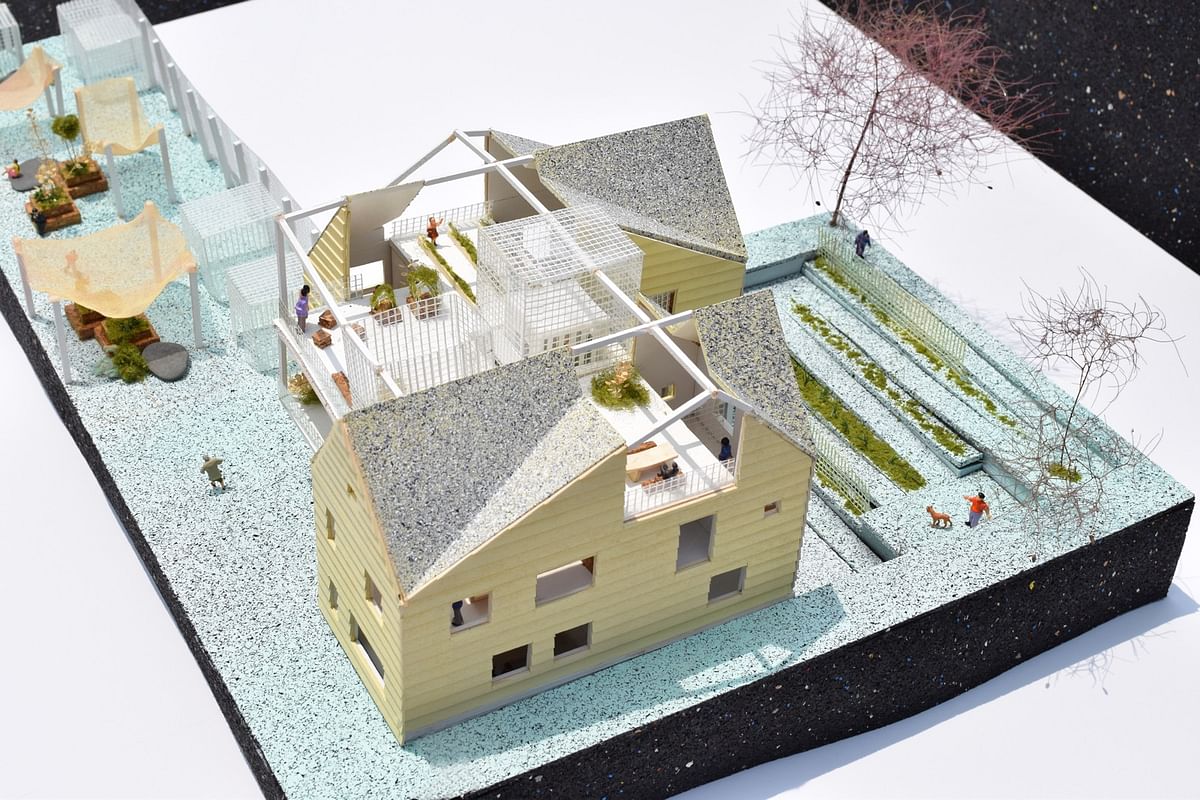
BRANDT: HAFERD wins Zero Threshold Competition for “multi-use, multi-abled” communal living design
By Justine Testado|
Monday, Oct 7, 2019
Related
Harlem-based architecture and design studio BRANDT: HAFERD won the $10,000 grand prize of the Zero Threshold Design Competition. As part of an initiative organized by nonprofit group North Coast Community Homes, the competition challenged entrants to create a proposal for Cleveland's Old Brooklyn neighborhood that would serve as an outstanding example of accessible design. The winning design had to be feasible to be applied to cities across the world.
Out of nearly 100 architects and designers from across the globe who participated in the competition, BRANDT: HAFERD — led by Jerome W Haferd & K Brandt Knapp — ultimately won the jury's favor with their proposal, “SIDE by SIDE : a multi-use, multi-abled commons”. With the Cleveland Foundation providing $149,000, North Coast Community Homes is raising money to build at least one of the winning designs in Old Brooklyn.
Below, BRANDT: HAFERD shared more details about their winning proposal.

“Part 1 : An Urban Approach
The siting of this prototype - three lots located at the transition between the neighborhood scale and the retail / light industrial scale - offers an opportunity to bridge the two and bring people together. These urban ‘edges’, common in many cities, become the point of departure of the project’s two primary components : 1) the community park / semi-public zone, and 2) the mixed-use living building with rear private garden. These two components literally act as an interlocking joint, and compliment one another while mediating between the neighborhood and the retail corridor.
While the primary ground-up project sits on two available lots, the scheme proposes to encourage a temporary community garden / plaza to extend onto the adjacent, privately owned property, producing a benefit to all and an accessible, social landscape which connects a (proposed) bus kiosk to the front yard of the multi-unit housing. Rocks reminiscent of the glacial geology of the region become playful elements to this extended ‘front yard’.”
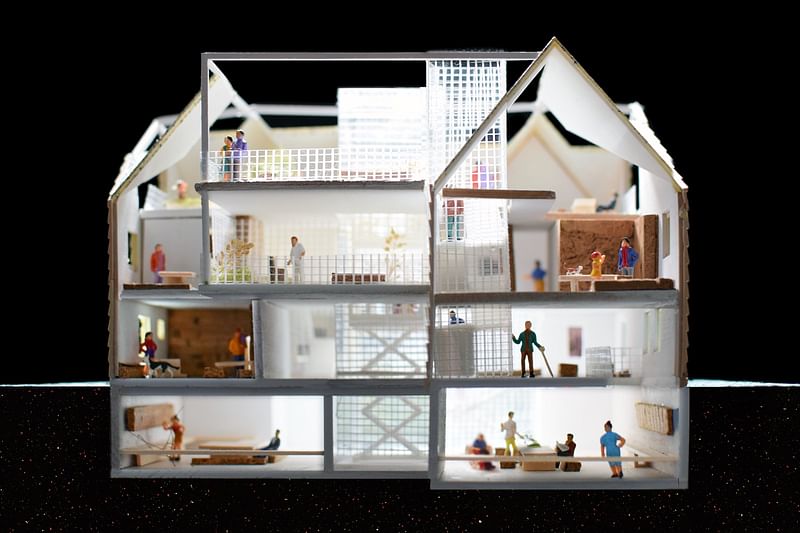

“Part 2 : A New Take On Multi-Family / Communal house
The housing piece is centered around an accessible double-decker platform/lift - or ‘room’ - at the heart of the project. Two prototypical housing volumes are placed side-by side, with the elevator/lift between them. An interstitial zone of common spaces is introduced to wrap the central spine and suture the units together, resulting in a communal house which straddles the two lots.
The two masses are ‘sheared’ along their own public/private ‘fault-line’ : one side to pushes forward to engage the public zone, while the other is recessed to define a more private, communal garden to the back. The double-height lift ‘pins together’ and connects residents of multiple ages and physical ability to the communal kitchen, rear accessible garden, and upper level roof garden which pinwheel off of this spectacular, but low-tech intervention.”

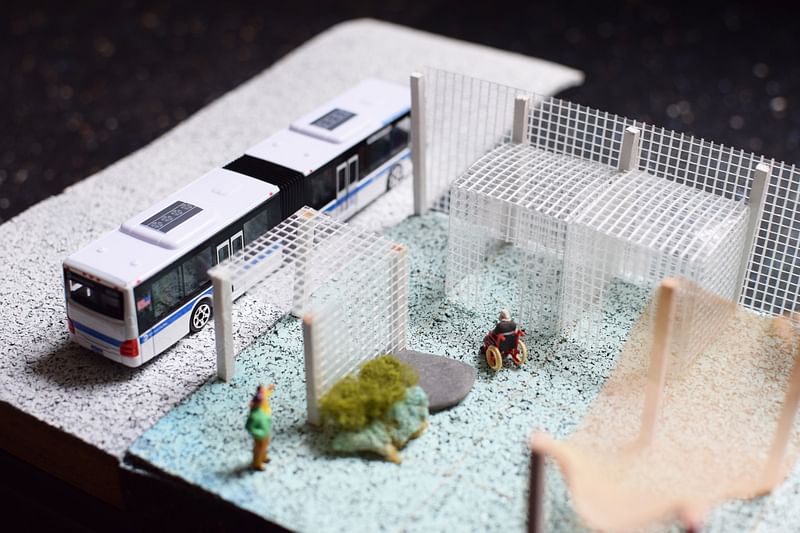
“Part 3 : Accessibility at many scales
We wanted to design the project holistically, thinking through every ‘threshold’ that can be a potential challenge, and celebrating design interventions that offer alternatives to standard conditions.
Some of these elements we developed with our team include:
-bus system : improved access, more stop shelters
-complete streets : rethink edge condition of arterial and residential streets
-community garden / landscape : permeable pavers, accessible + play seating, temporary amenities (toilet, compost, market) become architectural features
-access-a-ride / arrival to site : create a designed drop-off zone
-main entry : creates clear passage to central lift
-lift / stairs to living spaces : shafts are visually permeable and open
-vertical garden : indoor/outdoor garden spaces permeate throughout
-use of pocket doors, auto or ‘push to open’ buttons
-‘communal’ kitchen : sunken, easy to access utilities, workshops, cooking lessons
-basement threshold : opens to backyard through flush condition
-ramped garden : meandering ramp as design feature.”
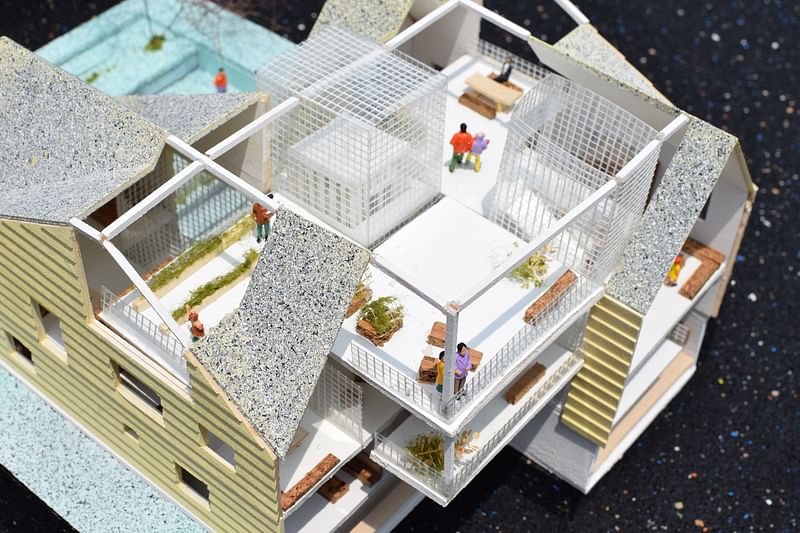
Jury: Justin Garrett Moore, executive director of the New York City Public Design Commission; Liz Ogbu, founder and principal of Studio O, San Francisco; Andrew Frontini, principal and design director of the Perkins + Will offices in Toronto and Ottawa; Gyungju Chyon, assistant professor, Parsons School of Design, New York; and Sheena McGee, a Cleveland interior designer.
Find more drawings in the gallery below.


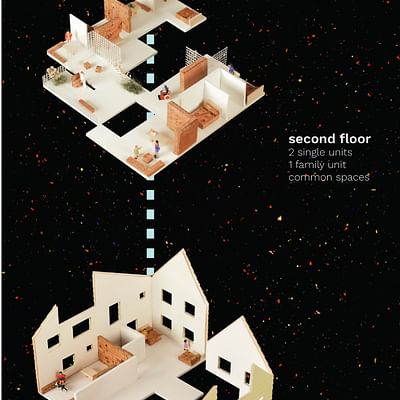

Share
0 Comments
Comment as :